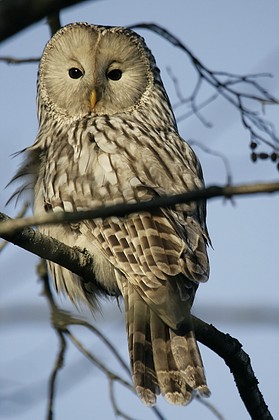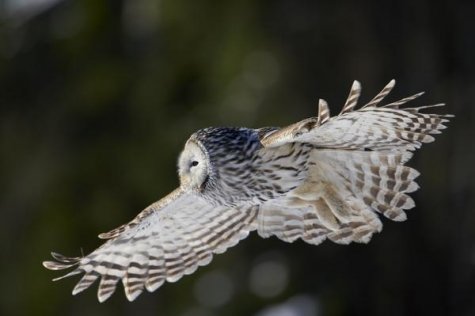Ural owl in leafless forest
Photos: Arne Ader and Sven Zacek
Translation: Liis
Ural owl
Ural owl Händkakk Strix uralensis
As dusk arrives the Ural owl selects a suitable high vantage point, to start hunting when darkness falls in the outskirts of bogs and marshes, forest clearings, fields ...
But how is it possible to fly noiselessly?
Owl feathers have a velvety surface which muffles sound that is caused by friction, and the wing primaries with comb-like edges direct the air flow away from the wings. Even very close and in calm weather nothing can be heard except silence – but look, the owl flies.
The Ural owl has a powerful and stocky body, with a long tail and light plumage. Dark eyes in pale grey eye circles, yellow beak. Legs whitish, black claws. An Ural owl is half a metre long, the wing span is more than a metre, weight below a kilo. Females are just a little larger than the males.
Ural owls only inhabited conifer forests earlier but have now become familiar with the wooded meadows and mixed forests of western Estonia. Teh Ural owls encountered in the islands are generally stray visitors.
Ural owl observations: LINK
Ural owl










